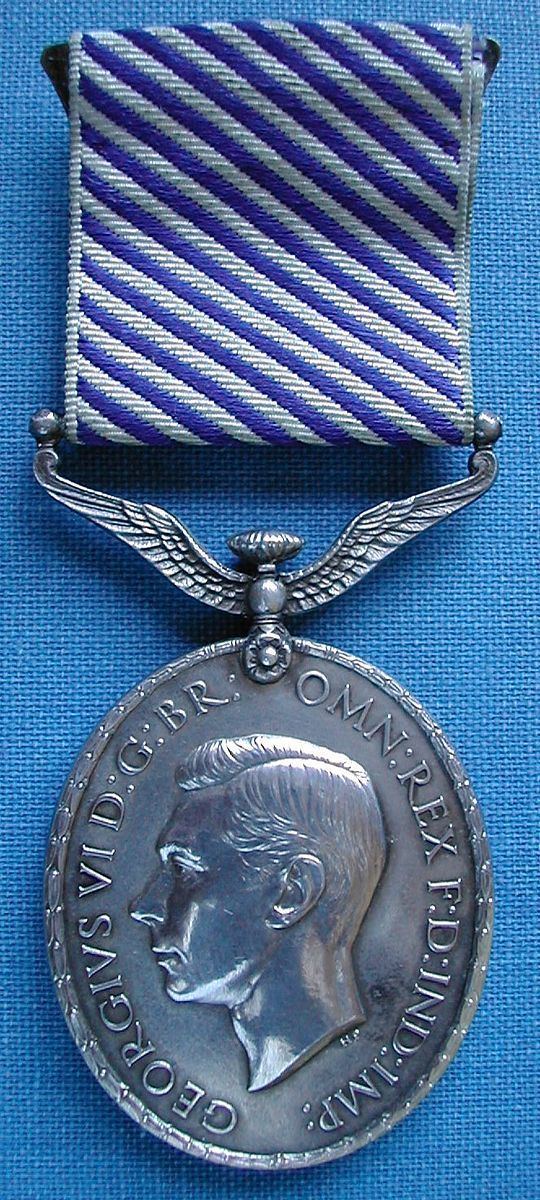Type Military decoration. Established 3 June 1918 | Status Discontinued in 1993 First awarded 1918 | |
 | ||
Awarded for exceptional valour, courage or devotion to duty whilst flying in active operations against the enemy | ||
Until 1993, the Distinguished Flying Medal was a military decoration awarded to personnel of the Royal Air Force (United Kingdom) and the other services, and formerly also to personnel of other Commonwealth countries, below commissioned rank, for "an act or acts of valour, courage or devotion to duty whilst flying in active operations against the enemy".
Contents
History
The medal was established on 3 June 1918. It was the other ranks' equivalent to the Distinguished Flying Cross, which was awarded to commissioned officers and Warrant Officers, although the latter could also be awarded the DFM. The decoration ranked below the DFC in order of precedence, between the Military Medal and the Air Force Medal. Recipients of the Distinguished Flying Medal are entitled to use the post-nominal letters "DFM".
It was announced in the London Gazette on 3 June 1918, but the actual Royal Warrants were not published in the London Gazette until 5 December 1919.
In 1993, the DFM was discontinued and, since then, the Distinguished Flying Cross can be awarded to personnel of all ranks.
Awards
There were two categories of award, either "Immediate" or "Non-Immediate".
An "Immediate" award was one which was recommended by a senior officer, usually in respect of an act or acts of bravery or devotion to duty deemed to command immediate recognition. In such circumstances, the recommendation for the award was passed as quickly as possible through the laid down channels to obtain approval by the AOC-in-C of the appropriate Command to whom, from 1939, the power to grant immediate awards was designated by King George VI.
An example of an "Immediate" award is that to Leslie Marsh, which was published in the London Gazette on 15 February 1944.
"Non-Immediate" awards were made by the Monarch on the recommendation of the Air Ministry and were to reward devotion to duty sustained over a period of time. This category of award could be made at any time during an operational tour but, in a large number of instances, the award was given to recognise the successful completion of a full tour of operational flying.
Numbers of awards
During the First World War, 104 Distinguished Flying Medals were awarded, and one second award bar. The first awards appeared in the London Gazette of 3 June 1918, where two recipients are listed.
The first award of a Bar to the Distinguished Flying Medal was announced in the London Gazette on 3 December 1918. It was awarded to 67162 Sergt.-Observer. Arthur Newland, D.F.M. (of Enfield Wash) who had been awarded a DFM on 21 September 1918.
Honorary awards of the DFM were made in the period 1918–19 to three Belgian airmen and one French airman.
In the period between the World Wars, 41 awards of the DFM were made between 1920 and 1929 and a further 38 between 1930 and 1939.
During the Second World War, 6,637 DFMs were awarded, with 60-second award bars.
At least 170 Honorary DFM's and 2 Honorary Bars (one of them to Josef Frantisek) were awarded to aircrew from other non-Commonwealth countries. 39 were awarded to servicemen of the USA, one Belgian, 14 Czechoslovakian plus one Bar, 33 French, 7 Dutch, 6 Norwegian, 66 Polish plus one Bar, and 4 Russian.
A second bar to the DFM was uniquely awarded to Flight Sergeant Donald Ernest Kingaby on 7 November 1941.
